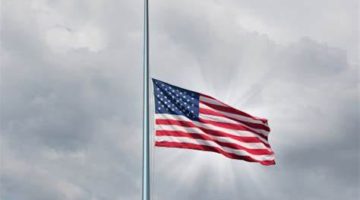 Allow me to dispel what seems to be an ongoing myth surrounding black folk in the outdoors, the one that says we don’t camp.
Allow me to dispel what seems to be an ongoing myth surrounding black folk in the outdoors, the one that says we don’t camp.
I beg to differ, and that belief is based on a recent weekend excursion to my old stomping grounds, Kentucky, and Mammoth Cave National Park, which is about 85 miles south of Louisville.
Never one to turn down an opportunity for a new adventure, when a Nashville, Tenn.-based colleague, Ken Stewart, suggested I join his Wilderness Survival training program for African-American youth, I, of course, said “Yes,” and began packing my camping gear.
Stewart runs the Tennessee Aquatic Project – TAP. Teen members learn swimming and scuba skills. Stewart said he believes it is vital that our youth learn about the outdoors; how to survive; to understand and respect the land as well as its history.
That’s where Mammoth Cave comes in. One recent Saturday at dawn, some 40 African-American children, teens and adults set out for Mammoth, a geological and historical wonder; a magical underground labyrinth, which – according to the National Park Service – is “the most extensive cave system on Earth.”
With over 365 miles of surveyed passages, the cave is believed by experts to have hundreds of miles yet to be discovered. So diverse in geology and plant and animal life, the park was named a World Heritage Site in 1981.
Park Ranger Jerry Bransford led us more than 140 feet down into the cool and winding passageways, following the same footsteps his ancestors explored.
“I’m the first Bransford who has been back here for 65 years guiding tours. I start at the very place that Nick and Mat went into the Caves in the 1830s,” he said.
Enslaved Africans who were owned and leased by the people who owned the cave, Nick and Mat were two of the earliest explorers and sable guides in Mammoth Cave in the early 1800s. For Bransford, bringing visitors into the dimly lit caverns and sharing his legacy is more than just a job. It’s personal.
“I’m the great-great grandson of the son of Materson Bransford, who was leased by a white English guy named Thomas Bransford, and he fathered my great-great grandfather from a little slave girl that his father bought in Nashville, named little Hannah,” he said.
He said he sometimes feels his ancestors’ presence in the cave. I think we all did.
Next stop: nearby Maple Springs Campground, nestled in the surrounding forest filled with trees; their leaves of red, yellows and golden browns.
Priority one: setting up, pitching your tent ( In wilderness survival, the teens sleep only on mats and tarps directly under the stars!), and starting a fire. The TAP teens quickly and efficiently finished both tasks, then began a lesson in rope and knot tying.
We cooked our dinners (tin-foil wrapped chicken and veggies) in the open fire pit. Students later embarked on a night hike, navigating the landscape quietly under the cover of darkness.
We wrapped up the evening under a sky teeming with stars by roasting marshmallows in the flames. Sitting close to the warmth of the fire, listening to the wood crackle and pop, feeling the cool chill in the air, I felt a sense of peace fall over me.
I crawled into my tent, snuggled into my sleeping bag, and thought, “Yeah, and black folk don’t camp.”
Editor’s Note: Julia Yarbough, a former news anchor at NBC 6, writes periodically on her outdoor and other adventures.
To read more of Julia’s columns, log on to SFLTimes.com.
JJYarbough@Aol.com
THE MORE YOU KNOW
To learn more about Mammoth Cave, log onto nps.gov/maca or www.breakingthecolorbarrier.com/documents/Black_Legacy_in_Mammoth%20_Cave.pdf.
To learn more about the Tennessee Aquatic Project, log onto www.tennesseeaquaticproject.org.












No Comment